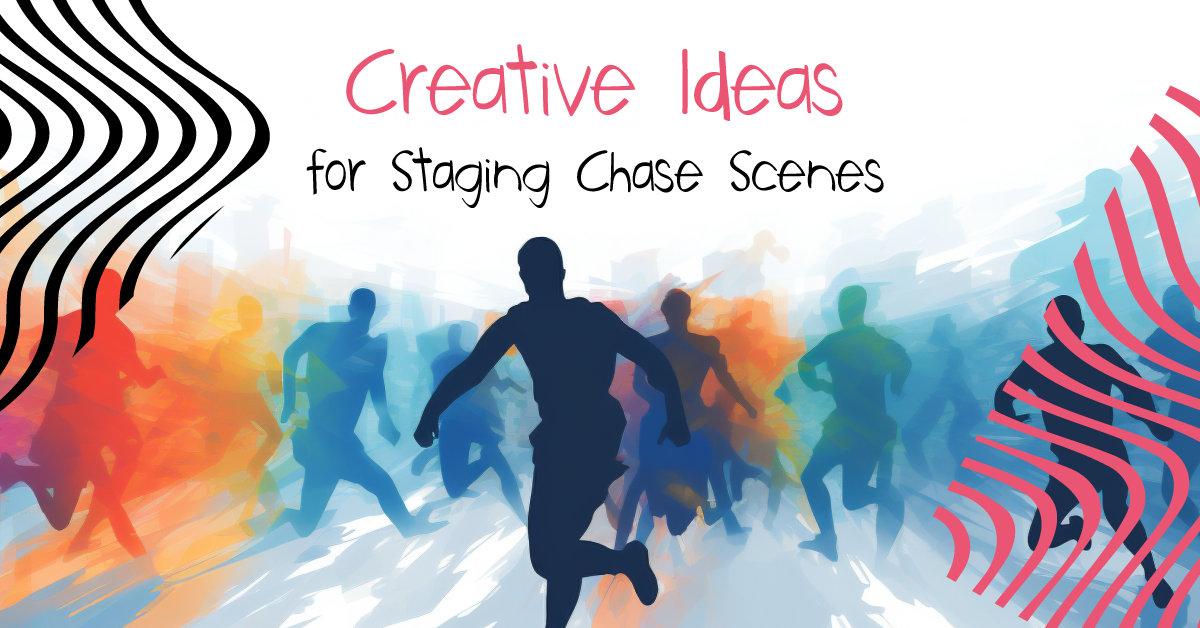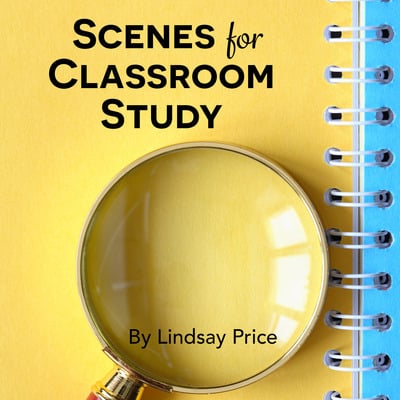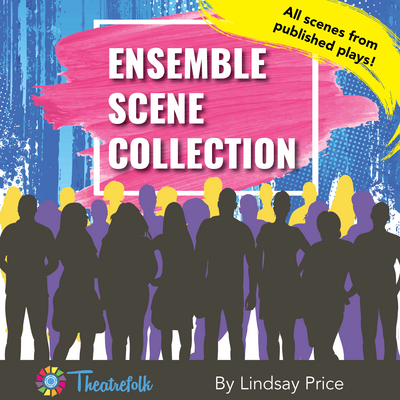Creative Ideas for Staging Chase Scenes
It’s always exciting to have action-packed sequences in your show, and chase scenes are both great fun and challenging to stage. Whether a character is being chased by a villain, chasing after a lost love, or participating in any kind of chase in between, you’ll want to ensure your choreography is exciting and engaging while also being repeatable and safe.
First, consider what tempo your student actors will be moving at. Are they running full out, are they doing a slow-motion sequence, somewhere in between, or a combination of both? They can all be used in comedic or dramatic shows, depending on how you block the actors’ body movements and facial expressions. As well, consider where in the performance/audience space your actors are. Are they actually moving throughout the staging area (which could potentially involve the stage itself, as well as the surrounding area such as through the audience) or are they moving in place? What concerns, risks, or safety issues might arise? Be sure to check out our safety considerations document in the giveaway below.
Here are several ideas for staging chase scenes creatively. If you’ve got more ideas, please share them with us!
For chase scenes that are staged by having actors run or jog in place, create the illusion of movement through imaginative lighting, projections, sound effects, and/or special effects, such as a fan or wind machine. Slow-motion chase scenes can be extra funny with the addition of exaggerated movements, facial expressions, and slowed-down vocalizations.
Create a side-scrolling video game effect by having actors face directly to one side of the stage and run in place. Have ensemble members or stagehands “scroll” by in the background — crossing the stage with set pieces or puppet-style props, running backstage or behind a curtain, and coming through the stage again as many times as you wish. Great for comedies. Explore different tempos with both the chasing characters and background performers to find a speed that works well.
You can create car or motorcycle chase scenes by having actors sit on rehearsal blocks with prop steering wheels (plates also work well for this!), with the target placed further downstage and the chasers placed further upstage. You could also try having students sit or kneel on small, wheeled platforms or hand carts, and have stagehands dressed in black move them around the space.
For chase scenes where the actors actually move throughout the space, you must ensure that every moment of the chase sequence is choreographed and well rehearsed. Draw a bird’s eye or top down map of your space and make a diagram of the movement path(s). You may want to use transparency sheets if you have multiple actors travelling in different directions to ensure there are no collisions. If the chase scene is part of a musical, you may wish to indicate on the sheet music exactly where students should be at a particular moment in the scene, circling or highlighting the lyrics or notes where students move.
Consider how you could use every inch of your space. How can you use your performing area(s) to its best advantage? Can you have actors go through or around the audience? Are there different entrance/exit points in your space, and how can you access them? Can you create additional entrance and exit points with flats, curtains, or other set pieces? Are there areas that students can climb around, go over, or sneak under?
Use puppets, dolls, stuffed animals, or shadow puppets to create a funny chase sequence. This can be useful if your chase sequence has magical moments, stunts, or any other risky movements involved, such as big leaps, tackles, or flying — it’s better to toss a doll across the stage than to risk a student’s safety.
Create the illusion of a super-fast movement by having multiple actors appear as the same character. Dress three or more actors in the same costume and have them pop in and out from different places on the stage at specific times, while the other actor(s) in the scene moves their head and body to indicate that the fast character is moving in a particular direction. For example, you could have Actor A pop out from stage right, and Actor B look at them. Actor A quickly moves backstage while Actor B makes a big movement to look out behind the audience, where Actor C has popped up from behind a door or an audience seat at the back of the auditorium. Continue for as long as you wish and for as many actors as you want to have involved in the sequence.
As mentioned above, be sure to do a thorough safety assessment of your blocking, set, costumes, footwear, and props to ensure that your students can maneuver through their chase sequences as safely as possible. Check out the free simple safety considerations resource in the giveaway below.
Related Articles
Scenes for Classroom Study
by Lindsay Price
Scenes for Classroom Study consists of scenes from published Theatrefolk plays and is designed to help with character study, scene work, substitute teachers, performance, Individual Event competitions and so much more.
Ensemble Scene Collection
by Lindsay Price
Looking for quality scenes for your ensemble that haven't been done a million times? This Ensemble Scene Collection contains 33 scenes from published plays - great for competition and classwork!





